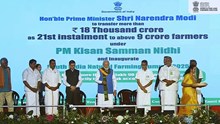
Poultry farming plays a crucial role in the agricultural landscape of India, particularly in rural areas where it contributes significantly to livelihood. In states like Assam and its neighboring regions, where livestock and poultry farming are closely integrated with crop cultivation and other agricultural practices, dual-purpose breeds such as Kamrupa hold immense market potential.
Kamrupa is a dual-purpose, multi-colored chicken breed developed in 2015 by Dr. Niranjan Kalita and his team at the AICRP on Poultry Breeding, Assam Agricultural University, Khanapara, Guwahati. This breed was created through a three-way cross involving the Assam Local Ecotype, Coloured Broiler, and Dalhem Red.
Known for its disease resistance and adaptability to local climatic conditions, Kamrupa boasts a robust body structure and excels in both meat and egg production. Its resilience makes it particularly suitable for backyard and free-range farming in the challenging climatic conditions of Assam, characterized by cold winters and humid summers.
Overview of Kamrupa Poultry Breed
Kamrupa is a three-way crossbreed developed from three distinct genetic lines-
-
Assam Local Ecotype (25%): Adapted to local climatic conditions and resistant to diseases.
-
Colored Broiler (25%): Contributes to meat production and body weight.
-
Dalhem Red (50%): Enhances egg production and overall hardiness.
The characteristic feature of this bird is its long shank which helps them protect themselves from predators, which is a major problem observed in backyard farming of birds. Another advantage of these birds is their resemblance to local bird species in terms of body color and plumage pattern, which enhances their market potential.
|
Particulars |
Intensive system of rearing |
Backyard system of rearing |
|
Body weight (day-old chick) |
37-40g |
37-40g |
|
Male body weight (Maturity) |
2.5-2.7 kg |
1.8-2.2 kg |
|
Female body weight (Maturity) |
1.7-1.9 kg |
1.3-1.6 kg |
|
Age at first egg laying |
150-170 days |
180-200 days |
|
Egg production per month |
12-18 days |
8-11 days |
|
Annual Egg Production |
140-150 nos |
118-130 nos |
|
Average egg weight |
55 g |
52 g |
Disease Management in Kamrupa Birds
-
Vaccination of the flocks should be done against Ranikhet disease, Infectious Bursal Disease, and Fowl Pox disease as per the schedule.
-
The flocks should be treated with antibiotics and other common drugs against bacterial and protozoal diseases.
-
The birds should be dewormed in the interval of every 2 to 3 months.
Vaccination Schedule
|
Age |
Vaccine |
Dose and Administration Route |
|
0-7 days |
RD F/LaSota Strain |
1-2 drops; I/O or I/N |
|
12-14 days |
IBD (Live) |
1-2 drops; I/O or I/N |
|
28-30 days |
RD LaSota Strain (Booster) |
1-2 drops; I/O or I/N |
|
6 weeks |
Fowl Pox (Live) |
Wing Web (Double prick method) |
|
8 weeks |
RD, R2B Mukteshwar Strain |
0.5 ml; S/C or I/M |
|
12 weeks |
IBD (Live) Booster |
0.5 ml; S/C or I/M |
|
15 weeks |
RD, R2B, or Killed Mukteshwar Strain (Booster) |
0.5 ml; S/C or I/M |
Kamrupa – A Friend of the Poor!
Kamrupa is a versatile poultry breed that can be reared in both intensive and backyard systems, thriving under a low-input setup without requiring special dietary supplements. This makes it a highly cost-effective option, ensuring significant returns even under traditional rearing conditions.
One of the key advantages of rearing Kamrupa is its low mortality rate, making it an ideal choice for rural farming. In free-range systems, these birds can sustain themselves by feeding on by-products from cultivated fields, kitchen food waste, and naturally available resources such as worms, insects, and larvae.
Additionally, Kamrupa birds prefer scavenging over consuming compound feeds, further reducing the cost of rearing. This characteristic makes them particularly suitable for economically disadvantaged rural communities, providing a sustainable source of income and nutrition.
Market Scope of Kamrupa Chicken
The market price of Kamrupa varies across districts, but can still reach an impressive Rs. 400-450 kg. Considering its cost of rearing, this price is quite favorable as compared to other varieties. Furthermore, its close resemblance in appearance and taste to the local chicken variety is an added advantage to its market appeal, making it a perfect choice for traditional and flavorful chicken recipes.
Additionally, its eggs are priced between Rs. 8-10 in the market. As a dual-purpose bird, Kamrupa offers significant economic potential, making it a valuable asset for rural communities and local vendors due to its affordable establishment cost.
Kamrupa is a promising poultry variety that aligns with the needs of rural farmers in Assam. Its dual-purpose nature, low maintenance requirements, and high profitability make it an excellent choice for free-range farming. With increasing demand for organic and indigenous poultry products, Kamrupa has the potential to transform rural economies and improve the livelihoods of small-scale farmers. By addressing challenges such as predators, diseases, and market access, Kamrupa can become a cornerstone of sustainable poultry farming in Assam and beyond.
















